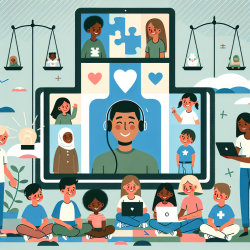Here are some key takeaways from the research to help you enhance your practice:
- Accessibility: Telepsychiatry breaks down geographical barriers, making it easier for children in remote or rural areas to receive mental health care.
- Cost-Effectiveness: By reducing travel time and associated costs, telepsychiatry can make mental health services more affordable for families.
- Stigma Reduction: Offering therapy sessions from the comfort of home can reduce the stigma often associated with visiting a mental health clinic.
- Training and Education: Telepsychiatry platforms can be used to train primary care providers, enhancing their ability to identify and manage mental health issues in children.
While telepsychiatry offers numerous benefits, it also presents unique challenges. Practitioners must ensure they are well-versed in the technological aspects of telemedicine and maintain high standards of care. Here are some strategies to help you navigate these challenges:
- Technology: Invest in reliable, secure video conferencing tools and ensure both you and your patients are comfortable using them.
- Training: Regularly update your skills through webinars, conferences, and publications to stay abreast of best practices in telepsychiatry.
- Compliance: Familiarize yourself with the legal and ethical guidelines governing telepsychiatry in your region to ensure compliance.
- Multidisciplinary Approach: Collaborate with other healthcare providers, including therapists, social workers, and educators, to offer comprehensive care.
By leveraging the advantages of telepsychiatry and addressing its challenges, you can significantly improve the mental health outcomes for children and adolescents in your care. For more detailed insights and to read the original research paper, please follow this link: Telepsychiatry for Mental Health Service Delivery to Children and Adolescents.










